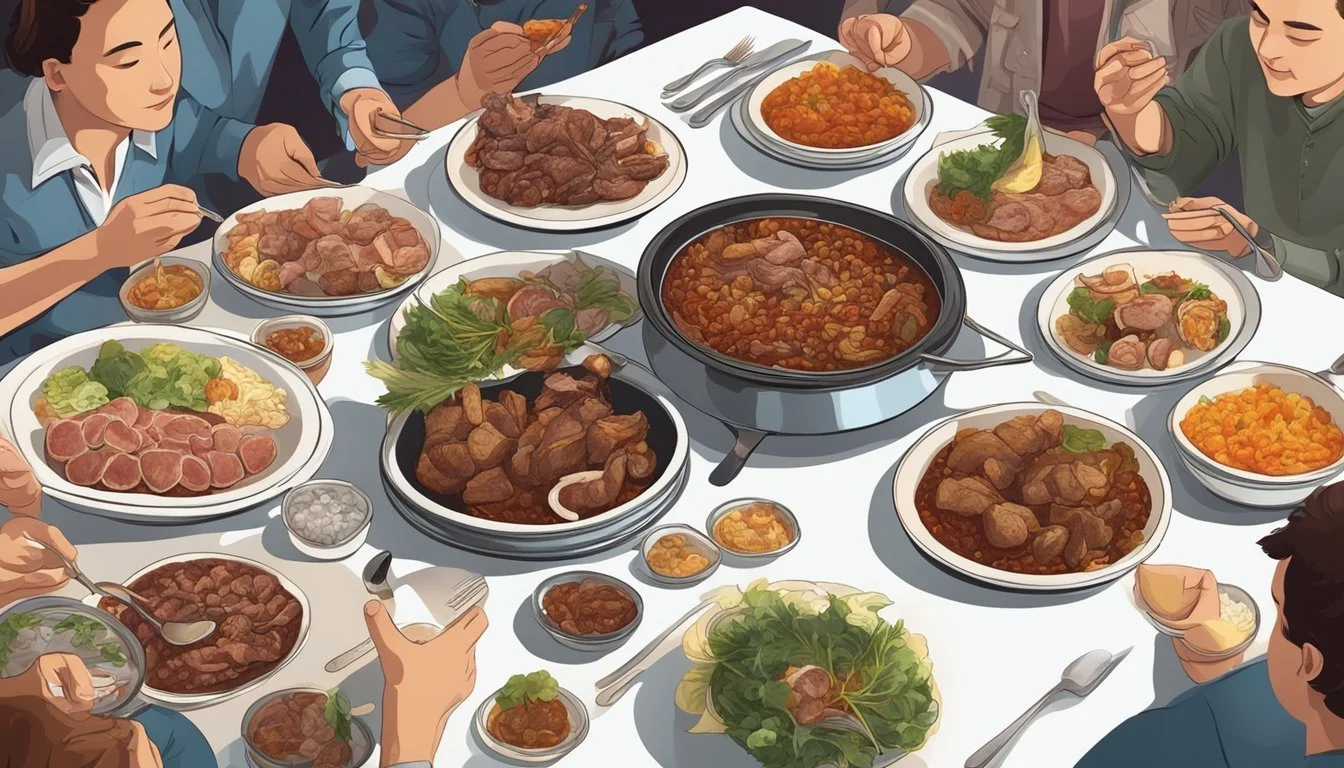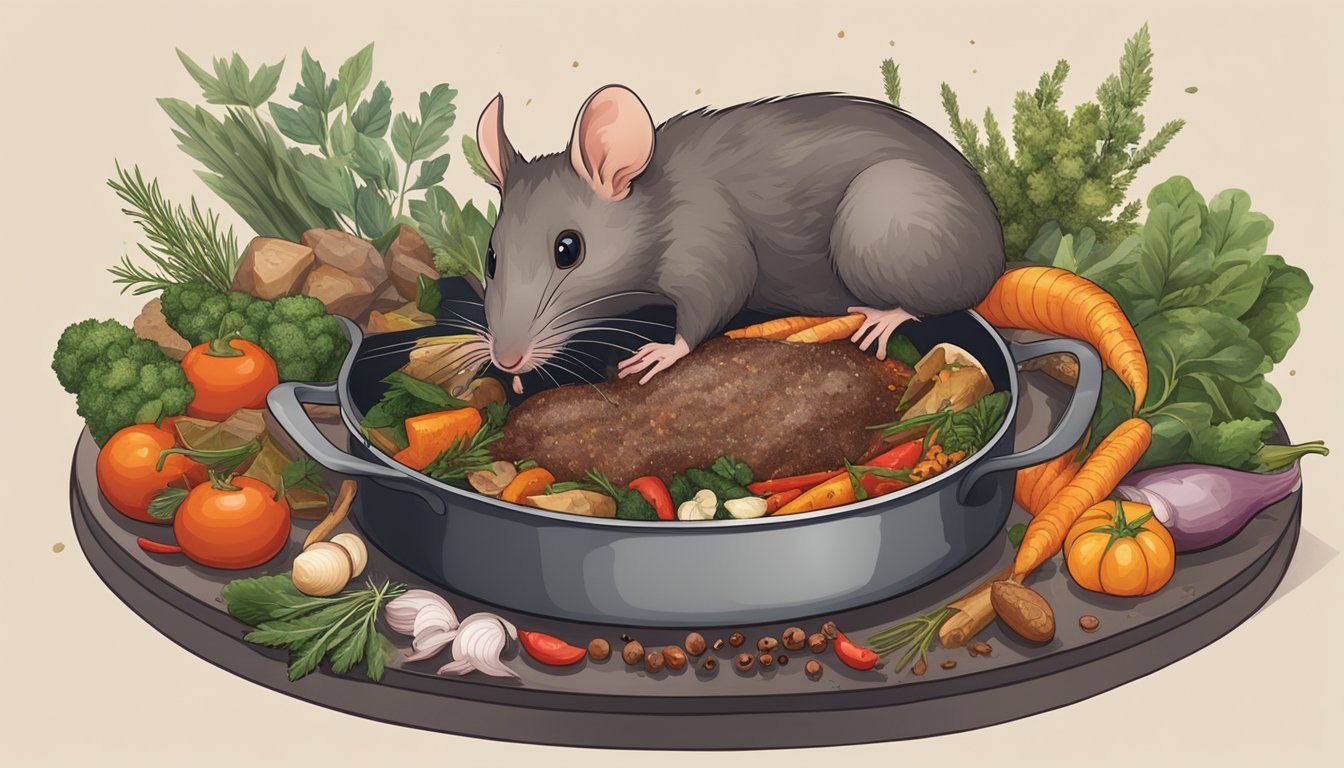Rat Meat Cultural Delicacies and Rodent Cuisine Explained
In various cultures around the globe, rat meat is not only a source of sustenance but also an integral part of culinary tradition. While the notion of eating rats may stir discomfort or disbelief in many societies, several communities consider rodents, from the kiore in New Zealand to the African giant rats, as a necessary and even luxurious component of their diet. The consumption of rat meat traverses geographical boundaries, making appearances on dining tables from Asia to Africa, reflecting both historical practices and contemporary preferences.
In Vietnam, for example, rat meat is a sought-after protein, especially in farming regions where it serves as an everyday food and sometimes a specialty during certain festivals. It's not uncommon to find dishes featuring rat prominently showcased within local markets and restaurants. Similarly, in parts of India and African countries like Cameroon and Nigeria, rats are not only consumed for their taste but occasionally attributed medicinal properties, elevating their status to that of a delicacy.
The culinary practice of eating rat meat underscores a broader narrative about sustainability, resourcefulness, and traditional gastronomy. Utilizing rodents as a food source is deeply rooted in some indigenous practices, with centuries-old traditions persisting in the face of modern dietary choices. It speaks to the adaptive and diverse nature of human diets and sheds light on a food choice that, while unconventional to some, is a staple and a delicacy to others.
Cultural Perspectives on Rat Meat
Rat meat, often viewed with skepticism in many societies, is a celebrated delicacy and an integral protein source in various cultures around the globe.
Historical Significance in Various Societies
In New Zealand, the native kiore rat was historically a delicacy served to visitors and utilized as a form of currency during significant events. In South America, the tradition of eating rodents dates back to ancient times, with guinea pigs raised for food in Peru since 2500 BC. The Adi Tribe from India revered rats as part of their diet, highlighting that consumption of rodents has deep roots in many ancient societies.
Rat Meat in Modern Culinary Practices
In contemporary times, rat meat continues to be a valuable food source in certain regions of the world. Vietnamese farming communities, especially along the Mekong Delta, commonly include rat meat in their diet. Rats are a popular food in parts of Vietnam, Cambodia, and other areas near the Mekong River due to their abundance and the protein they offer.
In China, the inclusion of rodent meat in traditional cuisine has not waned, signifying its lasting cultural acceptance. Africa has also maintained this tradition, with countries like Ghana and Cameroon viewing rodent meat as a staple in their food culture. The consumption of rat meat in these regions reflects a pragmatic approach to sustainable food sourcing and stands as a testament to the adaptability of local culinary practices.
Health and Nutritional Value
The consumption of rat meat is not widely discussed in Western cultures but is an important protein source in some parts of the world, while it raises various health concerns that are important to consider.
Rat Meat as a Protein Source
Rat meat is a significant source of protein, particularly in parts of Southeast Asia, South and Central America, and in Ghana. Protein is a vital nutrient for the human body, crucial for building muscle tissue and repairing cells. Rat meat is not only palatable to some cultures but is also typically low in fat, making it a lean source of protein. In certain regions, it is not uncommon for rat meat to be sold in markets and even offered canned.
Health Concerns Associated with Rat Meat Consumption
Despite its nutritional value, the consumption of rat meat comes with several health risks. Rodents can carry a range of parasites and become infected with diseases that can be transmitted to humans. Some of the notable diseases include bubonic plague, hantavirus, leptospirosis, and salmonella, which are serious concerns and can lead to what are known as ratborne illnesses. It is crucial for rat meat to be properly sourced, handled, and cooked to minimize the risk of disease transmission. The World Health Organization and various health agencies emphasize the importance of cooking meat to safe temperatures to prevent infection.
Rodent Meat in Comparison to Other Meats
Rodent meat offers a distinctive profile both nutritionally and in terms of taste when compared to other common meats like chicken, pork, and beef. This section explores the similarities and differences in nutritional value and taste, as well as food safety considerations.
Nutritional and Taste Comparison
Rodent meat, such as that from rats or guinea pigs, is a rich source of protein. Its nutritional content can be likened to dark poultry meats, such as chicken or turkey. Consider the following table for a high-level nutritional comparison:
Nutrient: Protein (g per 100g)
Chicken: 27
Rabbit: 20
Pork: 25.7
Beef: 26.1
Rodent: 21-25
Nutrient: Fat (g per 100g)
Chicken: 3.6
Rabbit: 5-12
Pork: 20.8
Beef: 21.7
Rodent: 2.4-5.5
Nutrient: Cholesterol (mg per 100g)
Chicken: 82
Rabbit: 55-83
Pork: 62
Beef: 86
Rodent: 50-75
Rodent meat showcases lower fat content compared to beef and pork, making it leaner. The taste of rodent meat is described as slightly gamey, similar to game meats, and with a texture that resembles mammal muscle tissue. It typically appears darker in color.
Food Safety and Disease Risk Profile
Food safety is a critical aspect when comparing various meats. Unlike the regulated farming of animals like cows, pigs, and chickens, rodents often have a higher potential for exposure to diseases, which can be a concern:
Chicken, pork, and beef are subject to stringent health regulations and inspections to ensure they are free from diseases like salmonella and trichinosis.
Rodents, if not sourced from a controlled environment, could carry diseases that are transmissible to humans. This risk can be mitigated by proper handling and cooking techniques.
Proper preparation and cooking of rodent meat are paramount to eliminate the threat of diseases, which is a fundamental procedure as with any meat consumption.
Rat as a Food Source
Rat meat, while a controversial topic in some parts of the world, is a significant dietary component and economic asset in various cultures. Its consumption is particularly noted in Southeast Asia, West Africa, and some parts of South America.
Economic Aspects of Rat Farming
Rat farming is an economical venture in some regions, specifically where rats are considered a traditional food source. In parts of Asia, such as the Philippines and Indonesia, as well as in West African countries like Ghana, rats are farmed and sold in markets as livestock. These rodents, particularly cane rats and rice field rats, are valued for their meat and are sometimes preferred over other meats due to their low fat content and high protein. Rat farming can also be seen as a method to control pests while converting them into an asset.
Rat Harvesting in Rice Fields
In tropical Asia, including countries like Cambodia, Laos, Myanmar, and Thailand, rats that inhabit rice fields are regularly harvested. These rice field rats can be a problem for farmers as pests, but they are also a source of income and nutrition. Rat harvesting often involves trapping the rodents during harvesting seasons. In these rural settings, rat meat is appreciated for its flavor and is often a staple in local diets.
Urban Settings vs. Rural Settings
The consumption of rat meat differs notably between urban settings like Ho Chi Minh City, and rural settings. While in cities, rat meat might be seen as exotic and served in restaurants, in rural areas, it is a common and traditional food. Urban rats are typically not consumed due to concerns about disease and pollution exposure, whereas in rural areas, the rats consumed are often those from fields or farms, which are considered cleaner and more suitable for consumption. The difference in consumption patterns reflects the varying perspectives and availability of rat meat between urban and rural populations.
Preparation and Consumption Practices
The culinary practices surrounding rat meat vary widely, with techniques and dishes that reflect local traditions and available cooking methods. Rat meat, considered a unique protein source, forms a niche aspect of adventurous eating in some cultures and is prepared using traditional cooking techniques.
Traditional Rat-Cooking Techniques
Cooking rat meat involves a range of methods tailored to the type of rat and regional culinary preferences. Wild rats, specifically harvested for consumption, are typically processed thoroughly before cooking to ensure safety and palatability. Preferred preparation techniques include:
Frying: Rat meat is often cut into pieces and fried until crispy. This method enhances the flavor and creates a satisfying texture.
Grilling: Skewered rat meat is grilled over open flames for a smoky taste. This method is favored for its ability to impart a distinctive charred flavor.
Boiling: In some cultures, rat meat is boiled to create broths or soups, drawing out the rich flavors into the liquid.
Smoking: Smoking is an age-old technique that imparts a deep, woodsy aroma to the rat meat, preserving and flavoring it simultaneously.
Steaming: For a more delicate flavor, rat meat is sometimes steamed with local herbs and spices to infuse it with subtle aromas.
Dishes and Delicacies Featuring Rat Meat
The inclusion of rat meat in dishes often highlights its unique taste and texture qualities. Some notable dishes featuring rat meat are:
Fried Rat: Often served as a crispy delicacy, resembling conventional fried small game meats.
Rat Soup: A hearty soup where boiled rat meat is combined with vegetables, spices, or regional ingredients.
Grilled Rat Skewers: Popular as street food in some areas where the grilled meat is sometimes seasoned with local spices and served hot.
Rat meat dishes are generally accompanied by staple foods such as rice or vegetables, complementing the flavors and contributing to a balanced meal. These culinary practices reflect a pragmatic approach to protein sources, utilizing rodents that are abundant in certain environments.
Cultural Taboos and Acceptance
In exploring the diverse dietary practices across the globe, one finds that cultural perceptions play a significant role in defining what is deemed acceptable or taboo. Rat meat, in certain cultures, is embraced, while in others, the very mention of it as cuisine stirs strong aversion.
Rodent Meat as Unmentionable Cuisine
In many societies, the thought of consuming rodent meat is met with instant repulsion. The image of rats as subway-scurrying vermin that carry diseases has cemented a cultural taboo against eating them in places such as North America and Europe. These animals are often associated with filth and pests, rendering them unmentionable as a food source. This outlook is reinforced by social norms and historical sentiments, making the practice of eating rat meat largely inconceivable.
Changing Attitudes Towards Rat Meat
Conversely, attitudes towards rat meat are not static and can vary based on circumstances and cultural perspectives. For instance, in some regions of Southeast Asia, as well as in parts of Africa and South America, rat meat is not merely a viable choice but is also regarded as a delicacy. This perspective shift is occasionally driven by necessity, where protein sources are scarce, or by tradition, where historical consumption has normalized the practice. It is not unusual for rat meat to appear in local markets and be featured in customary dishes. The acceptance of rodent cuisine is often a reflection of resourcefulness and regional heritage.
Scientific Research and Expert Perspectives
This section explores the role of scientific expertise in understanding the sustainability and health considerations of consuming rodent meat, considering ecological rodent management strategies, and insights from renowned researchers in the field.
Ecological Rodent Management
International Rice Research Institute (IRRI) researcher Grant Singleton focuses on ecological rodent management. He emphasizes the importance of sustainable practices, which involve the study and management of rodent populations in a way that minimizes crop damage and maximizes agricultural productivity. For example, the lesser cane rat, which can weigh over 6kg, is one of the species managed under these programs. Singleton's work underscores that well-designed ecological management can result in higher yields and increased food security.
Insights from Rodent Researchers
Renowned expert Robert Corrigan of RMC Pest Management Consulting in the United States has contributed extensively to the study of urban rodentology. He notes that among the approximately 89 rodent species considered pests, species like the bandicoot rat pose significant challenges in urban areas. Corrigan's research suggests that a deep understanding of rodent behavior and biology is crucial for effective management and potential use as a food source, ensuring that health standards are met and ecological impacts are considered.
Economic and Environmental Impacts
The consumption of rat meat influences both economies and ecosystems. In certain regions, it stands as a testament to the adaptability of local markets and the maintenance of ecological balance.
Impact on Local and Global Markets
The trading of rodent meat significantly affects local markets in various parts of Asia and Africa. In countries like Cambodia, Laos, Myanmar, Indonesia, Thailand, Ghana, China, and Vietnam, rat meat is not only a dietary staple but also an item of commerce. For example, in the Mekong Delta of Vietnam, rodents fetch higher prices than other common types of meat, pointing to its value within local food markets. These markets operate on a supply chain that begins with the capture or breeding of rodents and extends to the sale in local and sometimes even urban areas, as seen in Ho Chi Minh City.
Vietnam: Particularly in the north and south, rat meat has formed a niche, yet thriving market.
Global perspective: While the thought of eating rodents may seem strange in Western nations, the global food industry often explores sustainable and cost-effective food sources, where rodent meat might play a role.
Rat Populations and Ecological Balance
Rodents can often be seen as pests, threatening crops and food storage, but their harvest for meat in some cultures can help maintain an ecological balance. By reducing waste food through consumption, they inherently manage rat populations that could otherwise explode and cause agricultural havoc. It is a cycle where rodents contribute to the local ecology as both a consumer and a resource.
Rodent meat can be a sustainable choice, especially in regions where conventional livestock farming is challenging or where feed resources are limited.
Ecological impact: Harvesting rats for consumption not only controls their populations but also utilizes an animal that has a high reproductive rate and can thrive in diverse environments.
Future of Rat Meat Consumption
As global populations rise and sustainability becomes a vital consideration, the consumption of rat meat presents unique opportunities and challenges. This section explores the potential of rat meat in contributing to sustainable practices and the shifts in food preferences on a global scale.
Potential for Sustainable Practices
Rat meat has been identified as a promising alternative protein source that could play a role in sustainable food systems. Rodents reproduce quickly and have a high feed-to-meat conversion rate, making them an efficient option for meat production. With concerns about the environmental impact of traditional livestock rearing, rat meat is considered to have a lower carbon footprint and can contribute to the overall aim of increasing global food production sustainably. Some cultures already incorporate rat meat into their diets due to its availability and nutritional value, hinting at its potential broader acceptance if presented as a viable, ecologically responsible choice.
Shifts in Global Food Preferences
Food preferences are deeply influenced by cultural, economic, and environmental factors. As understanding of climate change's impact on food production grows, people may become more open to alternative sources of protein. Rat meat is established in the diets of certain communities in Southeast Asia, South America, and Africa, where it is sometimes sold in supermarkets and prepared in various culinary forms. While currently less common in Western diets, a shift could occur if perceptions of rat meat change and align with a global trend towards more sustainable consumption patterns. Public acceptance will likely hinge on effective education about the benefits and safety of rat meat as food, alongside ensuring that preparation and consumption practices meet health and safety standards.





